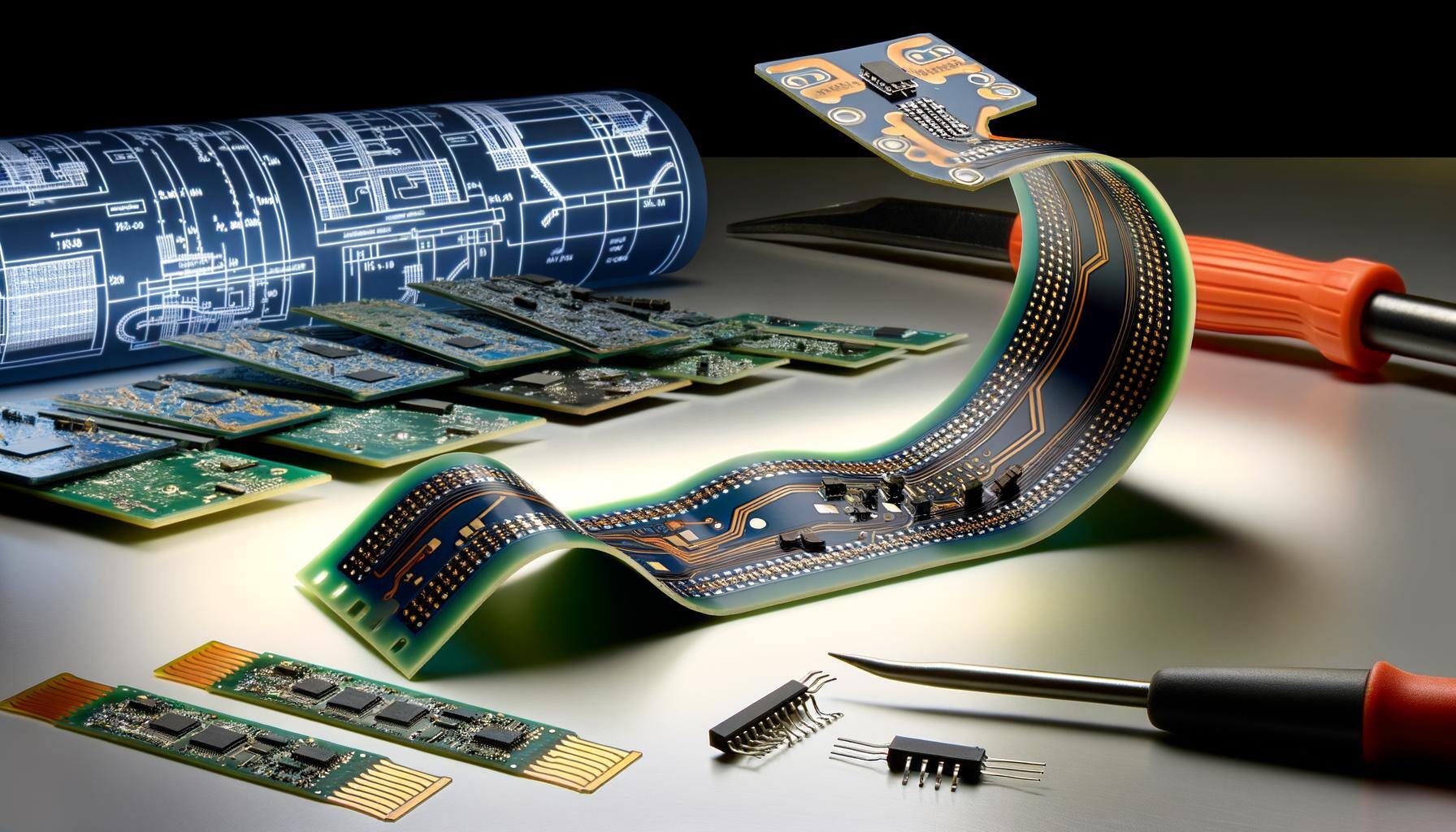

Diving into the Basics: What Are Flex and Rigid Flex PCBs?
Printed circuit boards (PCBs) are the backbone of modern electronics, enabling the compact and efficient assembly of electronic components. Among the various PCB types, Flex and Rigid Flex PCBs stand out due to their unique properties and applications. Understanding these boards begins with recognizing their fundamental differences.
Flex PCBs, or flexible printed circuit boards, are designed to bend and conform to various shapes, making them ideal for applications where space is limited or the design is non-linear. These PCBs are constructed using flexible materials such as polyimide or polyester, allowing them to be twisted or folded without damaging the circuits. This flexibility makes them particularly useful in compact electronic devices.
On the other hand, Rigid Flex PCBs combine elements of both flex and rigid boards. They consist of multiple layers of flexible substrates integrated with rigid sections. This hybrid design offers the flexibility of a flex PCB with the structural integrity of a rigid PCB, making them suitable for complex applications that require both durability and design versatility.
Unique Features and Advantages of Flex PCBs
Flex PCBs boast several unique features that set them apart. Their ability to conform to non-linear shapes means they can fit into tight spaces where traditional rigid PCBs cannot. This characteristic is particularly advantageous in the development of compact devices such as smartphones and wearable technology, where maximizing space efficiency is crucial.
Moreover, Flex PCBs are lightweight and can withstand mechanical stress, which is beneficial in industries that require durable yet lightweight components. In consumer electronics, medical devices, and even aerospace, the ability to withstand mechanical stress without compromising functionality is essential.
Another standout advantage of Flex PCBs is their cost-effectiveness in certain applications. Since they are generally less expensive to produce than their Rigid Flex counterparts, they can be an economical choice for projects that prioritize flexibility and compact design without the need for additional structural support.
The Strength and Versatility of Rigid Flex PCBs
Rigid Flex PCBs offer a compelling blend of flexibility and strength, making them a versatile choice for more demanding applications. These PCBs incorporate both flexible and rigid segments, providing the ability to endure harsh environmental conditions while maintaining reliable performance.
The structural integrity offered by Rigid Flex PCBs is particularly beneficial in high-stress environments such as automotive and military applications. In these sectors, components must withstand extreme conditions, including vibrations, temperature fluctuations, and mechanical stress. The robust construction of Rigid Flex PCBs ensures they meet these rigorous demands.
Furthermore, Rigid Flex PCBs can simplify assembly and reduce the overall weight of electronic devices by eliminating the need for connectors and cables between different board sections. This integration not only enhances reliability by reducing potential points of failure but also contributes to the miniaturization of electronic systems.
Key Considerations for Choosing Between Flex and Rigid Flex
When deciding between Flex and Rigid Flex PCBs for a project, several critical factors must be considered to ensure the right choice for the specific application. The primary consideration is the design requirements. If a project demands significant flexibility and compactness, Flex PCBs might be the better option. However, if the project requires a mix of flexibility and structural support, Rigid Flex PCBs could be more suitable.
Cost is another essential factor. While Flex PCBs are generally less expensive, the additional durability and complexity offered by Rigid Flex PCBs might justify their higher cost in certain applications. Additionally, the environmental conditions the PCB will face should influence the decision. Rigid Flex PCBs are often preferred in environments where they must endure harsh conditions while maintaining performance.
Manufacturing complexity and lead times also play a role. The intricate fabrication process of Rigid Flex PCBs can extend production timelines, which should be accounted for during project planning. Understanding these considerations will guide you in making an informed decision that aligns with your project goals and constraints.
Industry Applications: Where Each PCB Type Shines
Flex and Rigid Flex PCBs are utilized across a wide array of industries, each benefiting from their distinct properties. Flex PCBs, due to their adaptability and lightweight nature, are prevalent in consumer electronics. Devices like smartphones, tablets, and wearable technology utilize Flex PCBs to achieve sleek designs without compromising functionality.
Medical devices also benefit from Flex PCB technology. The need for miniaturized and flexible components in medical equipment, such as hearing aids and implantable devices, makes Flex PCBs an ideal choice. Their ability to conform to the human body's contours is particularly advantageous in this field.
On the flip side, Rigid Flex PCBs find their niche in more demanding industries such as aerospace, military, and automotive sectors. These industries require components that can withstand rigorous conditions while delivering consistent performance. The robust nature of Rigid Flex PCBs ensures they meet such high standards, providing durability and reliability in critical applications.
Emerging Trends and Future Developments in PCB Technology
The future of Flex and Rigid Flex PCB technology is promising, driven by continuous advancements in materials and manufacturing processes. Innovations in materials science are leading to the development of more durable and resilient flexible substrates, enhancing the performance and longevity of these PCBs.
Additionally, the integration of advanced manufacturing techniques, such as additive manufacturing and 3D printing, is paving the way for more complex and customized PCB designs. These technologies enable the production of intricate circuit patterns and structures that were previously unattainable, opening new possibilities for electronic innovations.
As the demand for smaller, more efficient electronic devices continues to grow, Flex and Rigid Flex PCBs are poised to play an increasingly critical role. Their unique properties and adaptability make them indispensable in the quest for technological miniaturization and efficiency, ensuring their relevance in future trends and developments within the electronics industry.